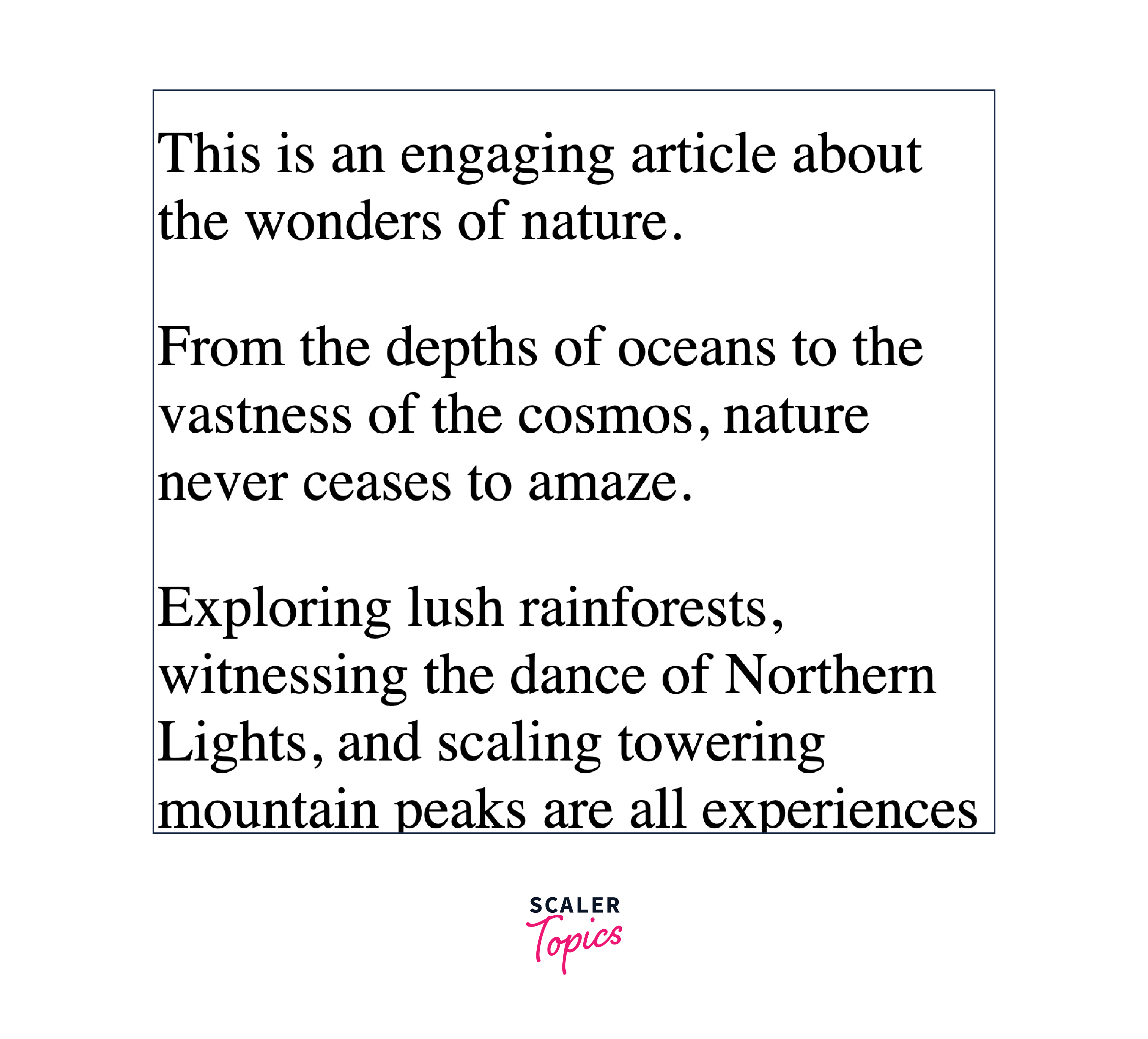Scroll to the Top of the Page Using jQuery

Overview
Scrolling to the top of a webpage using jQuery enhances user experience by providing a seamless and animated transition. jQuery, a widely-used JavaScript library, enables the creation of a smooth scroll effect when a specific event, such as clicking a button or link, is triggered. Through this functionality, users can effortlessly navigate back to the top of a page, improving accessibility and overall engagement.
Syntax
To scroll to the top of the page using jQuery, you can use the following syntax:
In this code, $('html, body') selects both the <html> and <body> elements to ensure cross-browser compatibility, as different browsers may require scrolling one or both for consistent behavior. The animate() function smoothly scrolls the page to the top, and 'slow' specifies the animation speed. You can adjust the speed by using different values like 'fast', 'normal', or a numerical value in milliseconds.
Parameters
The syntax for scrolling to the top of the page using jQuery involves using the .animate() function with specific parameters.
Here are the various parameters used in the syntax:
-
Element Selection: This is the selector for the HTML element(s) you want to animate. In the context of scrolling to the top, you generally use $('html, body') to select both the <html> and <body> elements, ensuring cross-browser compatibility.
-
Properties: An object that defines the CSS properties to animate. In this case, you use the scrollTop property to determine the vertical scroll position.
-
Target Value: The value to which the scrollTop property should be animated. To scroll to the top, you set this value to 0.
-
Duration: The duration of the animation in milliseconds or using predefined string values like 'slow', 'fast', or 'normal'.
-
Easing (Optional): The easing function that controls the speed of the animation over time. This can be 'swing' (default) for a smoother start and end or 'linear' for consistent speed.
Here's the structure of the syntax:
In the case of scrolling to the top, it looks like:
Remember that the duration and easing parameters are optional. If you omit them, the animation will use default values (e.g., 'swing' easing and a reasonable default duration).
Examples
You have learned the concept of scrolling to the top of the page using jQuery. Here you shall see an example of how to implement scrolling to the top of a page using jQuery, along with an explanation of each part:
HTML:
Before clicking the button and scrolling to the botton:

After clicking the scroll to the top button:

Explanation:
-
We start by including jQuery using the <script> tag. Make sure to include this in the <head> section of your HTML.
-
The <style> section contains some basic CSS styles for the button that will appear at the bottom right corner of the page. Initially, the button is hidden (display: none;).
-
Inside the <body> section, we have a <button> element with the ID scrollToTopButton. This is the button that users will click to scroll back to the top.
-
There's some sample content (a <p> element) below the button, simulating a longer webpage that requires scrolling.
-
Inside the <script> tag, we wrap our jQuery code within the $(document).ready() function. This ensures that the code executes when the DOM is fully loaded.
-
We select the button using its ID and assign it to the scrollToTopButton variable.
-
We attach a scroll event handler to the window object using $(window).scroll(). This function checks the user's scroll position. If the user has scrolled down more than 200 pixels, the button fades in; otherwise, it fades out.
-
The click event handler is attached to the scrollToTopButton. When the button is clicked, the animate() function is used to smoothly scroll to the top of the page (scrollTop: 0). The 'slow' parameter determines the speed of the scrolling animation.
By following this example, you can create a smooth scrolling-to-top functionality on your webpage, enhancing user experience and navigation.
Conclusion
- Implementing smooth scrolling to the top of a webpage using jQuery significantly enhances the user experience.
- The seamless and animated transition offered by jQuery provides an engaging way for users to effortlessly navigate back to the top of a page.
- With jQuery's ability to create a smooth scroll effect triggered by events like button clicks or links, user engagement and accessibility are improved.
- By using the simple syntax of the .animate() function, developers can fine-tune animation duration and behavior, ensuring a consistent experience across different browsers. This feature contributes to creating more user-friendly and engaging websites.
